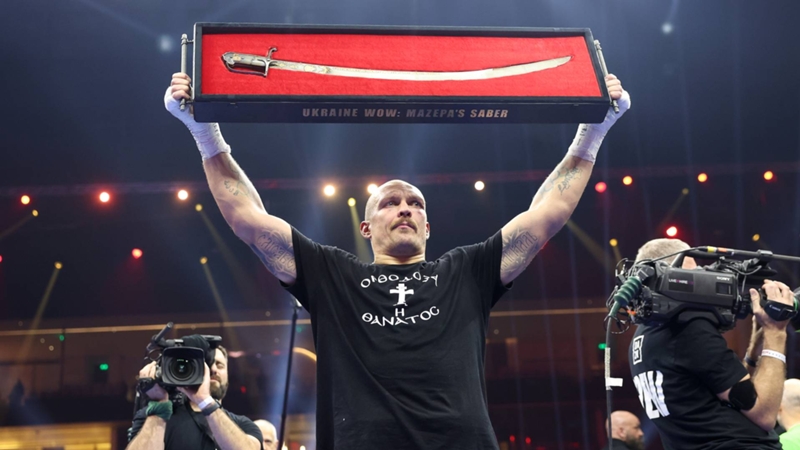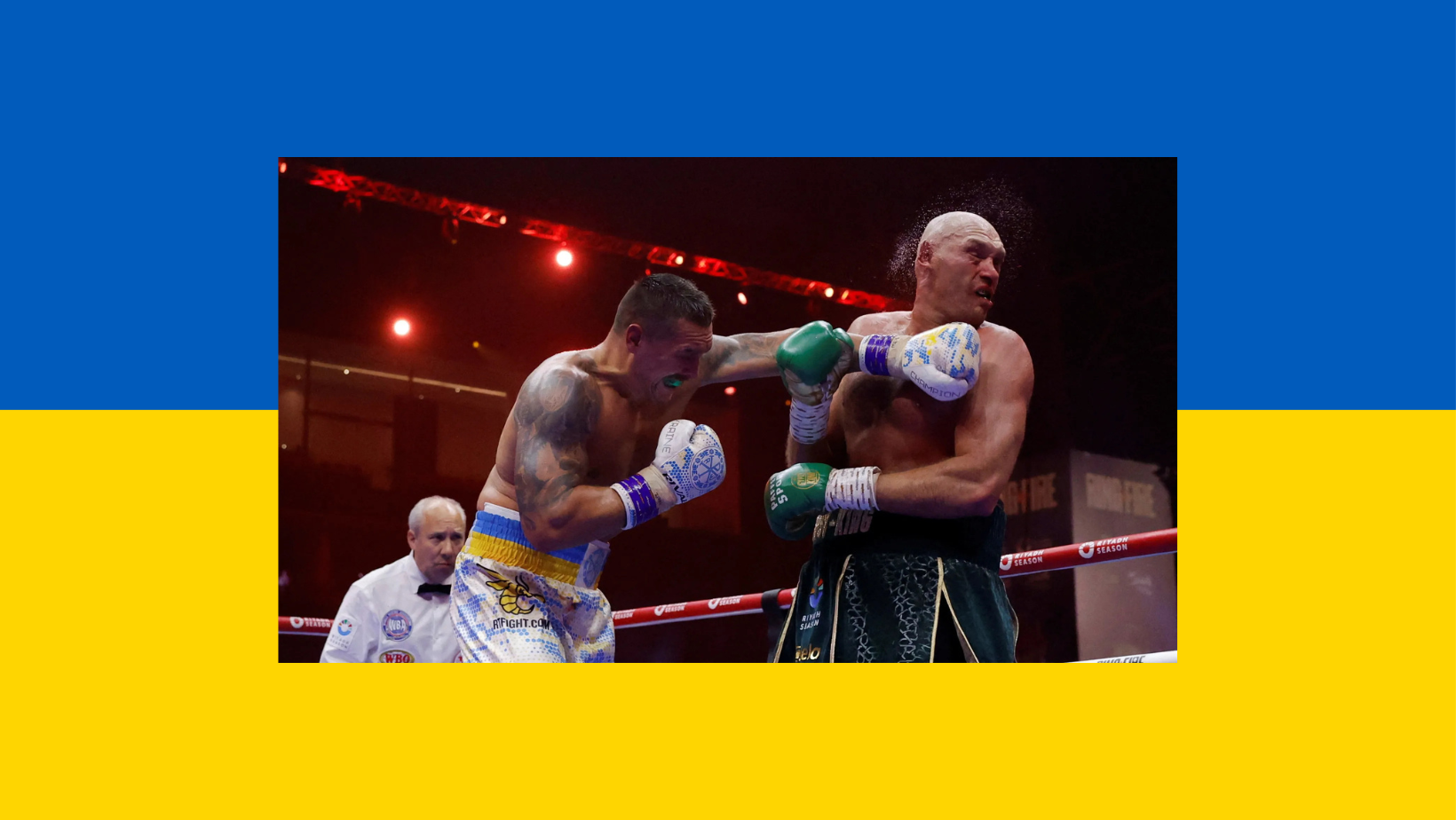“Every punch I land in the ring is also a punch for Ukraine, for our freedom and our future,” declared Oleksandr Usyk during a pre-match press conference, highlighting the deeper stakes of his fight.
The bout between Oleksandr Usyk and Tyson Fury, two of the greatest heavyweights of the modern era, transcends the realm of sports. Their clash at the “Kingdom Arena” in Riyadh, Saudi Arabia, for the unification of world titles has already cemented its place in boxing history. But for the Ukrainian champion, it is far more than just a fight. This rematch, which he won by unanimous decision after 12 grueling and intense rounds, is a testament to the resilience of a nation at war. Just hours before the fight, Usyk even held a videoconference with President Zelensky, reinforcing the political dimension of the event and underscoring the expectations of an entire people.
Since the start of the Russian invasion in 2022, Oleksandr Usyk has embraced a role far beyond that of an athlete. Joining Ukraine’s territorial defense forces in the early days of the conflict, he temporarily put his career on hold to actively participate in his country’s fight for survival. In every appearance, he draws attention to Ukraine’s plight, calling for international solidarity.
The weigh-in, typically a moment filled with provocations, took on a solemn tone this time. Usyk appeared with a “Free Azovstal Defenders” flag, reaffirming his support for Ukrainian soldiers still held captive by Russia. This gesture struck an emotional chord, reminding the world that every moment of his preparation is an opportunity to amplify Ukraine’s cause.
The entrances to the ring were equally symbolic. Usyk, accompanied by patriotic chants from his homeland, wore traditional Tatar attire adorned with motifs representing Ukraine’s cultural and warrior heritage. This choice honored the Crimean Tatar people, oppressed and deported under Stalin in the 1940s. In contrast, Tyson Fury, the flamboyant “Gypsy King,” made a dramatic entrance with a glittering coat and a Christmas song, staying true to his provocative and eccentric style. These contrasting approaches set the stage for an epic showdown.
Following his victory, Usyk made a powerful statement by raising a historic sword. The sword, transported especially for the occasion from a museum in the city of Chernihiv, once belonged to Ivan Mazepa, a hetman of Ukraine’s Cossack army who played a pivotal role in seeking greater autonomy for Ukraine during the reign of Peter the Great. This artifact, rich in symbolism, embodied the unwavering determination of the Ukrainian people to defend their independence and added profound meaning to Usyk’s triumph.
From a technical perspective, the fight was a clash of styles. Fury, with his imposing size and surprising agility, represented raw power. Usyk, on the other hand, showcased his strategic brilliance, using precise footwork and intelligent positioning to outmaneuver an opponent 25 kilograms heavier. Fury struggled to keep up with Usyk’s relentless pace. Yet, for Usyk, each round was more than just a sporting contest—it symbolized the daily battles his country fights against a supposedly more powerful adversary. The key difference between the two fighters lay not in their technique or physique but in their realities: one of them is at war, the other is not.
As the world watched the showdown with fascination, the narrative unfolding went far beyond the ropes. Usyk proved that he is more than just a legendary athlete; he is the embodiment of Ukrainian resilience and determination. The question now is whether he will continue to fight in the ring, as the Russian aggression persists and Ukraine needs all its defenders—on any battlefield.


